War Devastates Kids, Communities and Countries. But It’s Great for One Thing: Hunger
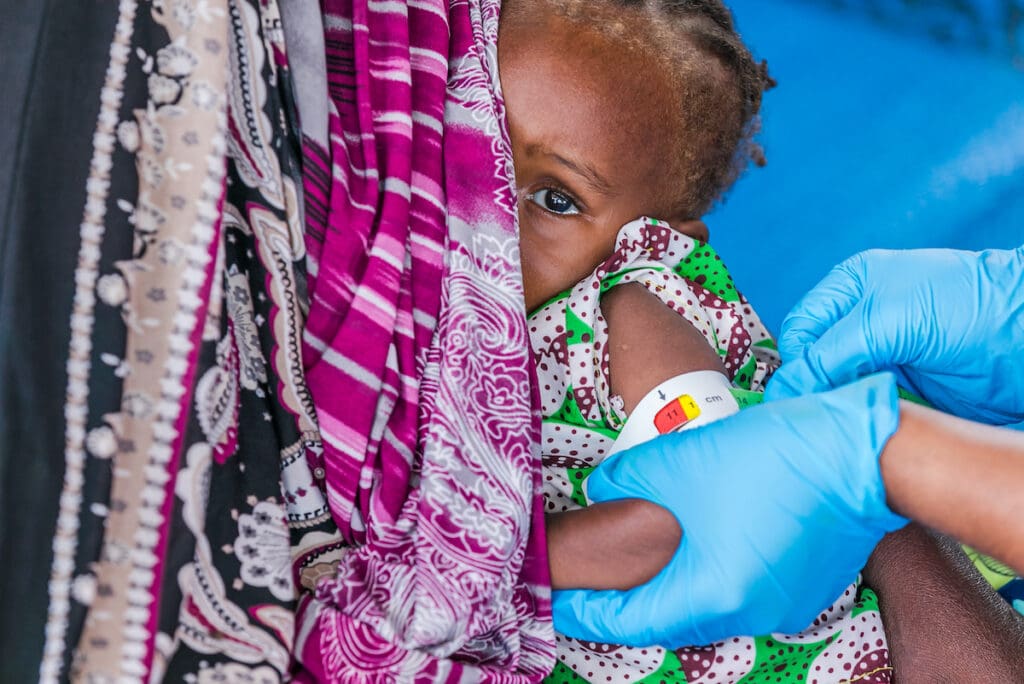
War. Violence. Persecution.
No matter what you call it, the result is almost always the same. Conflict – in all of its destructive forms – is the #1 reason millions of people are suffering from hunger. The scale is difficult to comprehend: Of the 690 million hungry people on the planet, 60% of the them live in conflict zones, and the vast majority of that 60% live in just a few places.
These are the six hungriest, most conflict-ridden countries on the planet:
Yemen
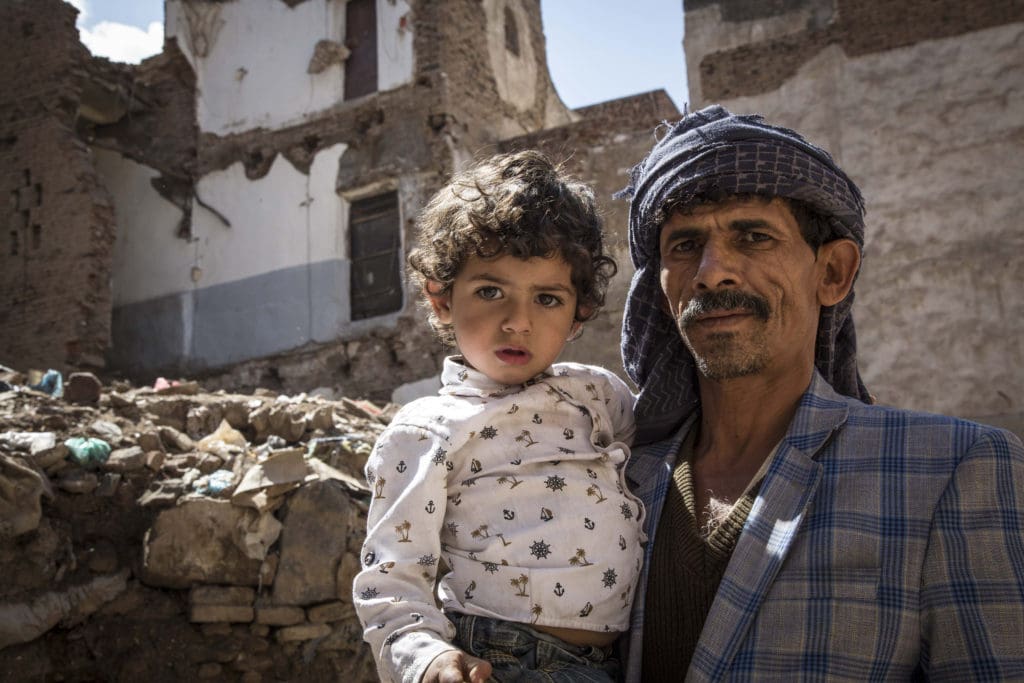
Ahmed and his two-year-old daughter Ali are barely getting by in Yemen. “We wait for WFP’s food every month. If it wasn’t for this food, I don’t know how we would survive,” says Ali’s mom.
Yemen is the world’s biggest, most dire hunger crisis. Over 70% of the population – 20 million people – is teetering on the brink of starvation. Here, we explain why in five simple steps.
The Democratic Republic of the Congo (DRC)
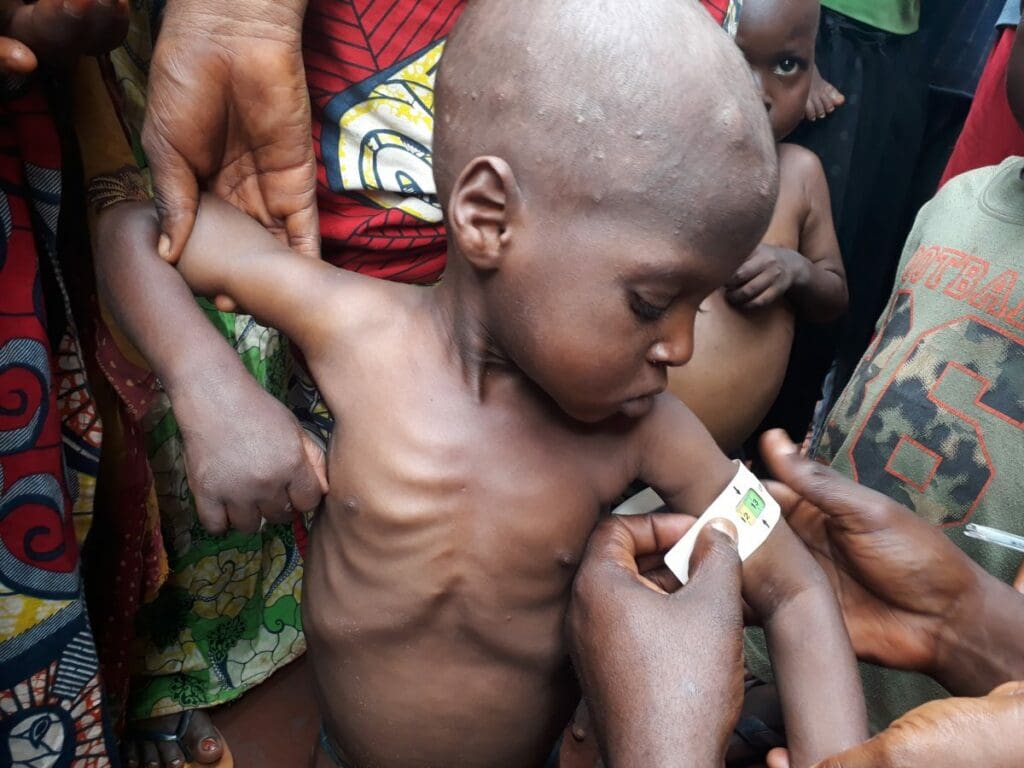
4-year-old Mulamba Lusazo is evaluated by aid workers in the DRC’s Kasai region. Thanks to WFP, he is now receiving a special fortified food to treat moderate acute malnutrition.
The DRC is the world’s second largest hunger crisis. Decades of civil war have left 22 million people severely food insecure, more than five million of which are acutely malnourished children.
South Sudan
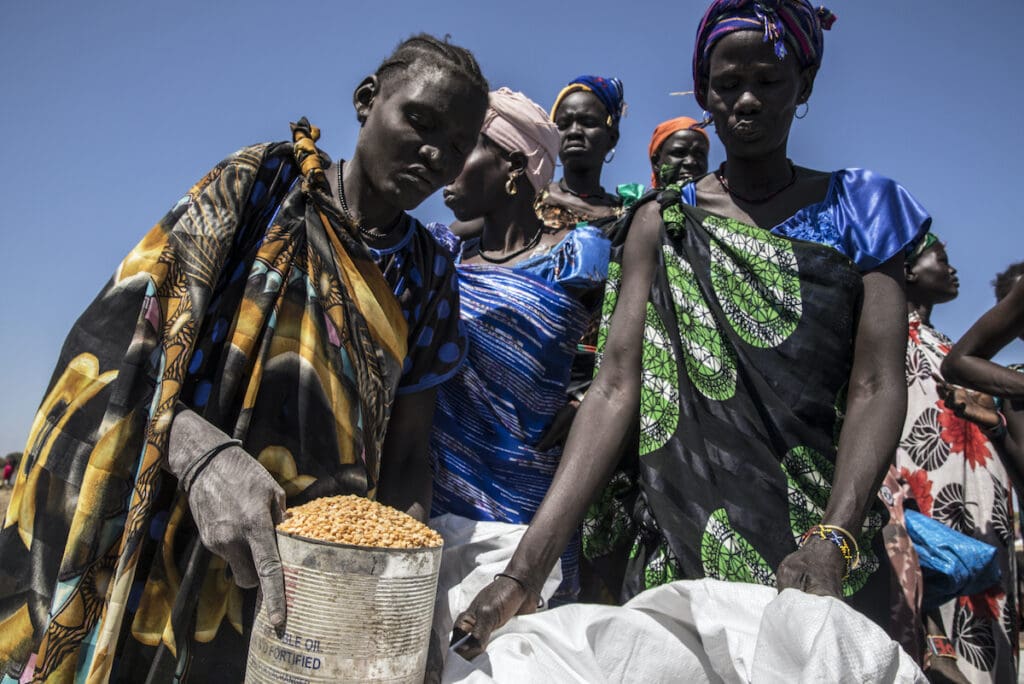
Women collect bags of WFP food assistance delivered via WFP air drops in a South Sudanese village.
Record-high levels of hunger across South Sudan are caused by a deadly combination of man-made conflict and erratic weather. More than 6.5 million people, half the population, are contemplating the f-word.
Syria
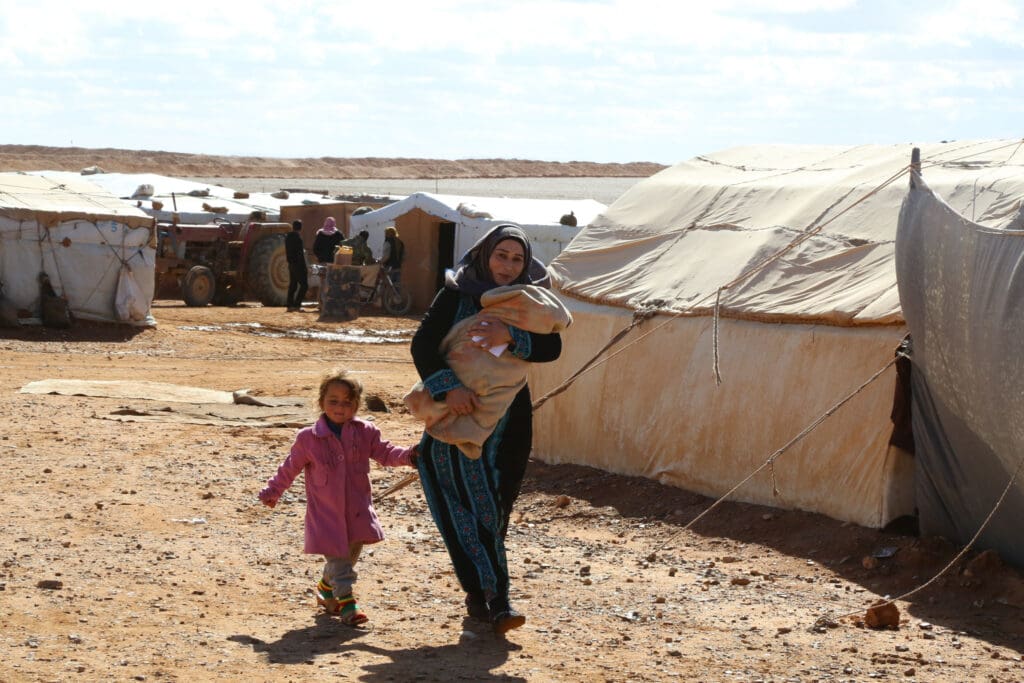
This family is just a part of the 40,000 people stranded inside the Rukban settlement in Syria. Living conditions are extremely tough due to the remoteness of the settlement and the harsh desert climate.
Nine years of war have pushed 75% of Syrians to extreme levels of poverty and hunger. More than 9.3M people don’t know where their next meal is coming from.
Nigeria
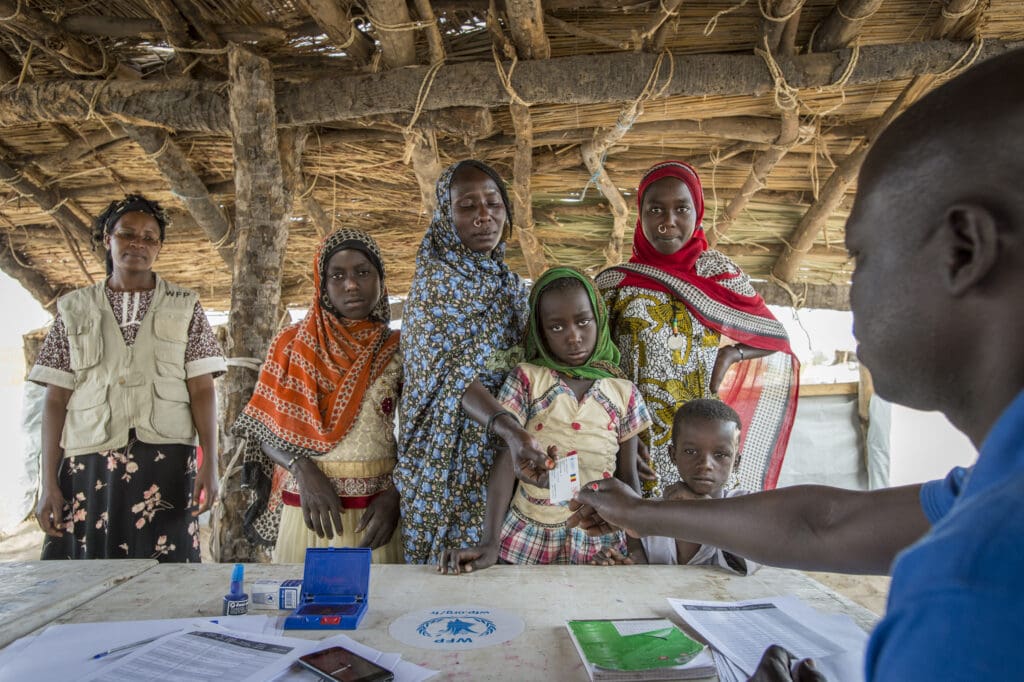
Coupled with the existing challenges of extreme poverty, underdevelopment and climate change, Boko Haram violence in the Lake Chad region has led to one of the most acute and sorely neglected humanitarian crises in the world.
Conflict is devastating, but when it’s mixed with poverty and extreme weather, it becomes even harder for people to cope. This is the case in Nigeria, where over 8 million people are critically hungry.
The Sahel
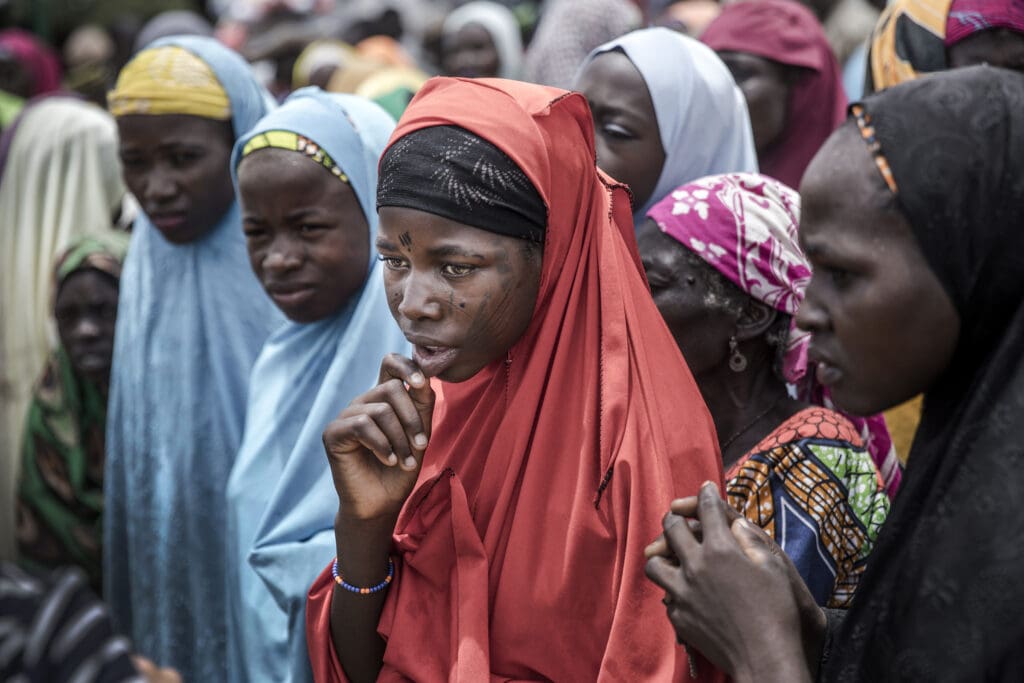
A group of girls waits for a United Nations convoy in the village of Sabon Machi in Niger on August 16, 2018.
The Central Sahel – comprised of Burkina Faso, Mali and Niger – faces a deadly combination of conflict and climate change. Today, more than 7 million people across the region are in need of urgent, life-saving food.
How did this happen? The answer is deceptively simple.
Once conflict begins, the downward spiral into hunger can be swift and unrelenting. First comes destabilization, then displacement and finally malnutrition.
Destabilization
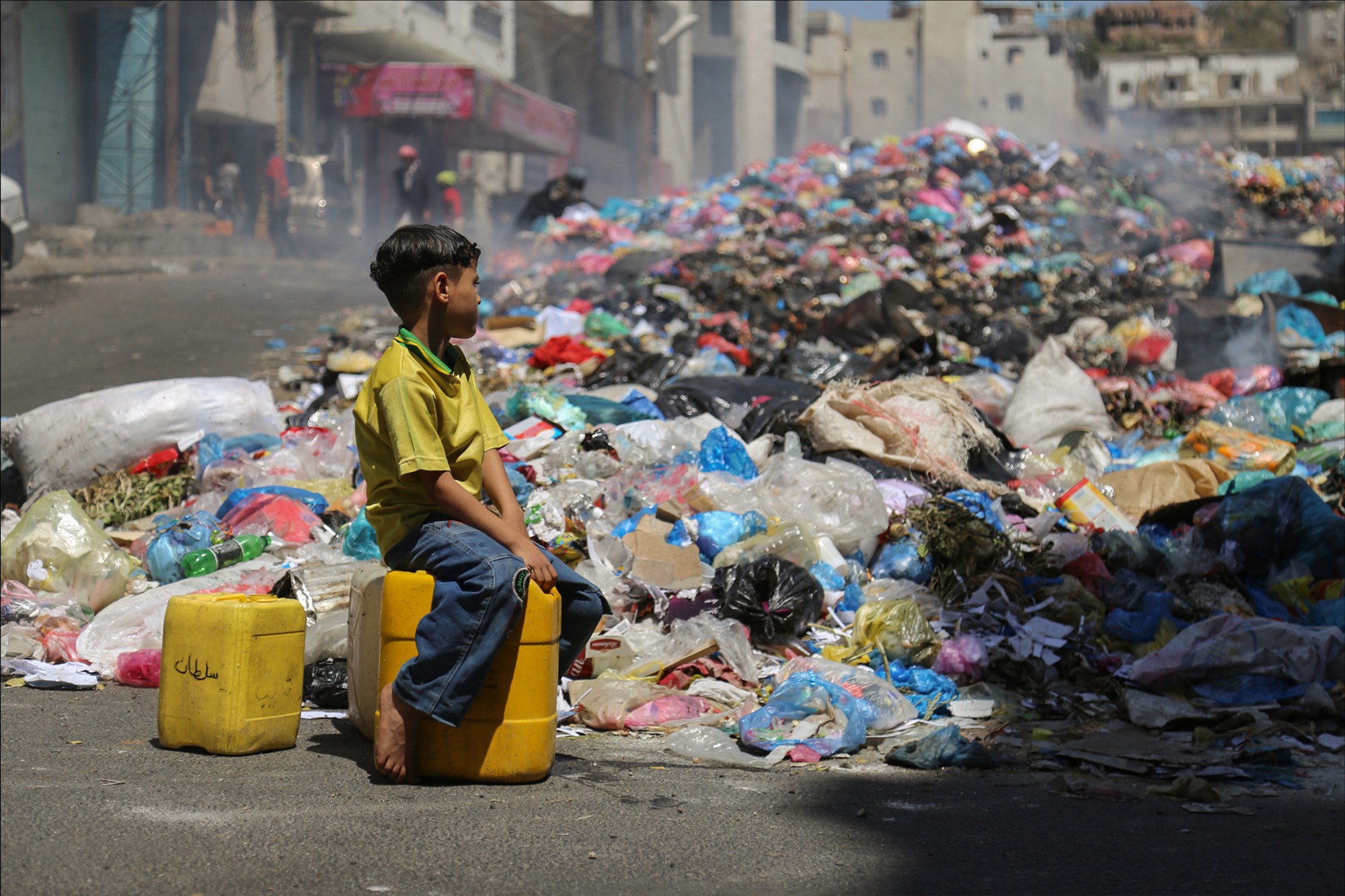
People under siege inside Taiz city in Yemen piled and burned their garbage on a main road after access to the garbage dump on the outskirts of the city was blocked due to the ongoing fighting.
When violence erupts, it sends shock waves throughout the region’s entire infrastructure. Essential buildings like hospitals, banks and schools are often destroyed. Transportation routes are cut off, making it difficult to travel. Warring parties seize control of public assets, like docks and airports, which can delay or halt imports. This makes basic necessities harder to find, which causes their price to rise and the value of currency to fall. Inflation takes hold, businesses struggle to stay open under the pressure and employers are forced to cut jobs. Parents can no longer afford to send their children to school, so they’re pulled out.
Any one of these factors can put food farther out of reach, but combined, conflict leads to life-threatening levels of hunger.
Displacement
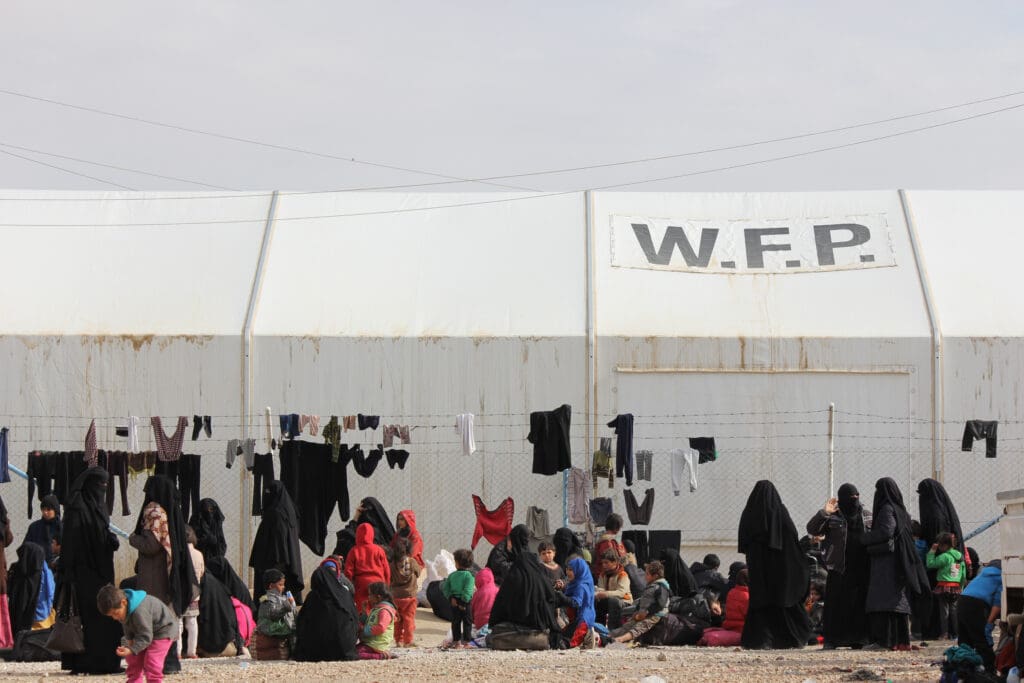
Al-Hole camp in Syria is home to 30,000 people. To reach the camp, they walked long distances and paid smugglers to bring them to the closest check points where they were driven to the camp by trucks.
Sometimes, a region becomes so unstable that families have no choice but to leave. Other times, violence erupts so suddenly that families are forced out in a matter minutes, or they risk dying. In either scenario, they often leave their homes on foot, bringing only what they can carry. These displaced people either become refugees or internally displaced people (IDPs). Refugees are people who have sought safety outside of their home country. IDPs are anyone still living inside their country’s borders.
No matter where they seek safety, refugees and IDPs often find themselves without adequate shelter, health care, electricity, cooking equipment or a way to earn an income. Finding something to eat under these circumstances in foreign places that are already strained becomes nearly impossible without help.
Malnutrition
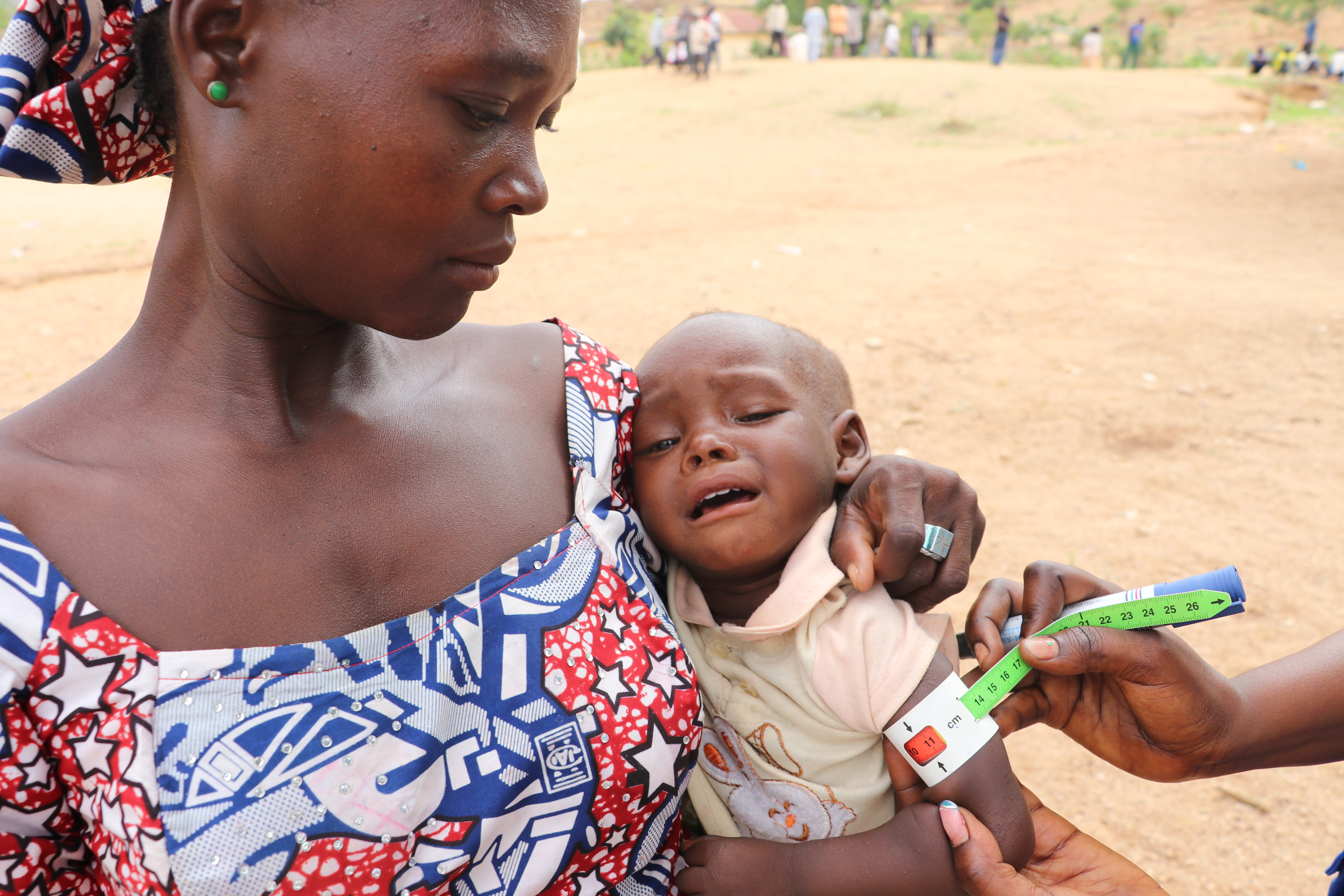
A child in Madagali, Nigeria is measured for mid-upper arm circumference. The red marking on the band indicates the most severe form of malnutrition.
The combination of destabilization and displacement almost inevitably leads to hunger, which, in a dark irony, feeds on itself. Pregnant women who are malnourished are more likely to give birth to underweight babies. New moms who don’t have enough to eat aren’t able to produce breast milk for their infants. And children living in countries ravaged by violence are more than twice as likely to be malnourished. Hungry people are desperate people, and in this way, hunger fuels further conflict. In fact, forty percent of civil wars or internal conflicts in unstable countries are the result of competition for scarce food and resources.
Hunger begets more hunger.
But we can help break the cycle. The United Nations World Food Programme (WFP) works day and night in the world’s most dangerous places to distribute food, provide emergency nutrition, deliver school meals and rebuild the infrastructure people need to feed themselves and overcome future upheaval.
Will you join the fight?
Find more facts, stats and stories from the front lines of conflict with videos, a quiz and an interactive infographic on our Conflict and Hunger Hub.




